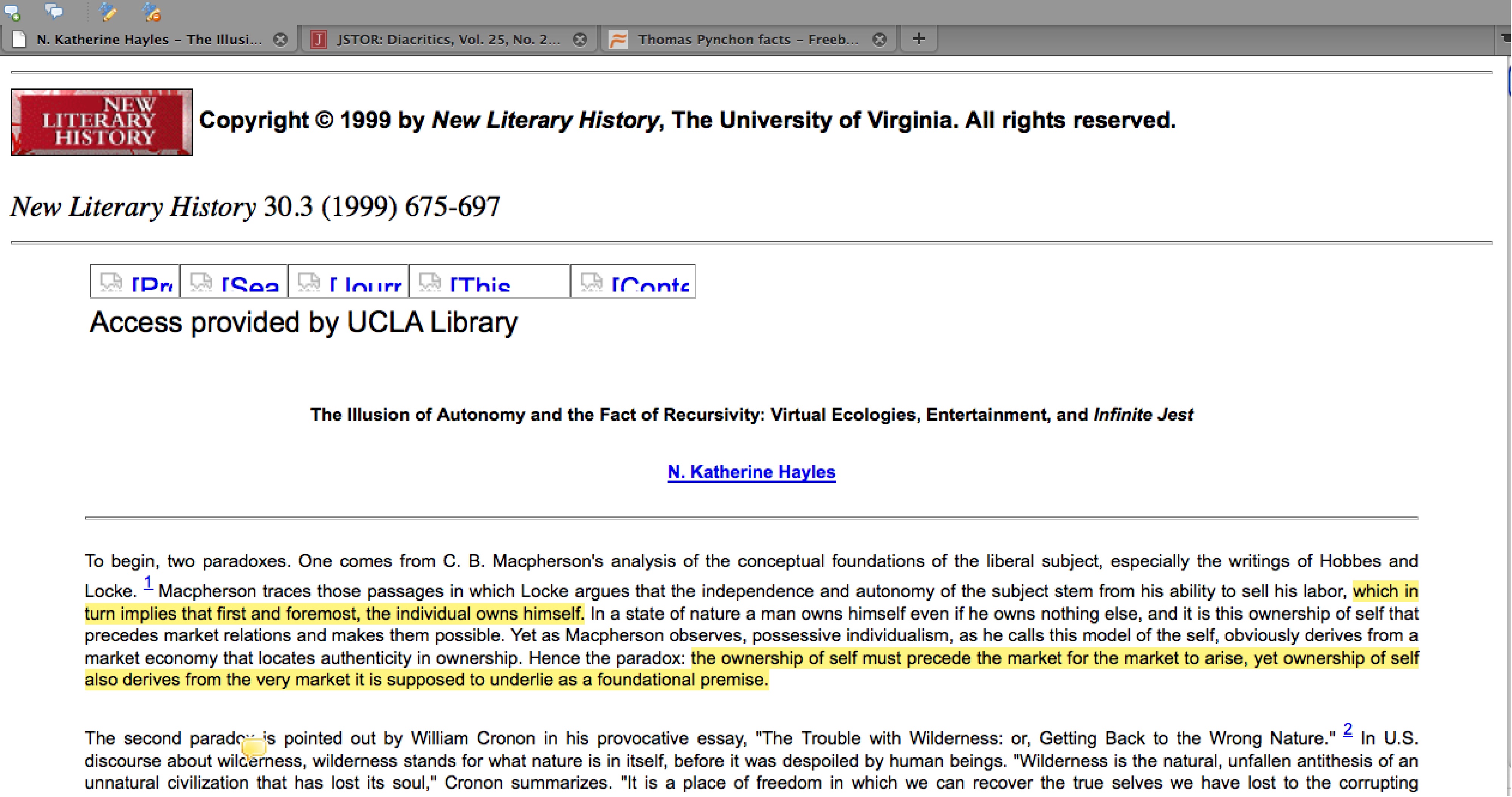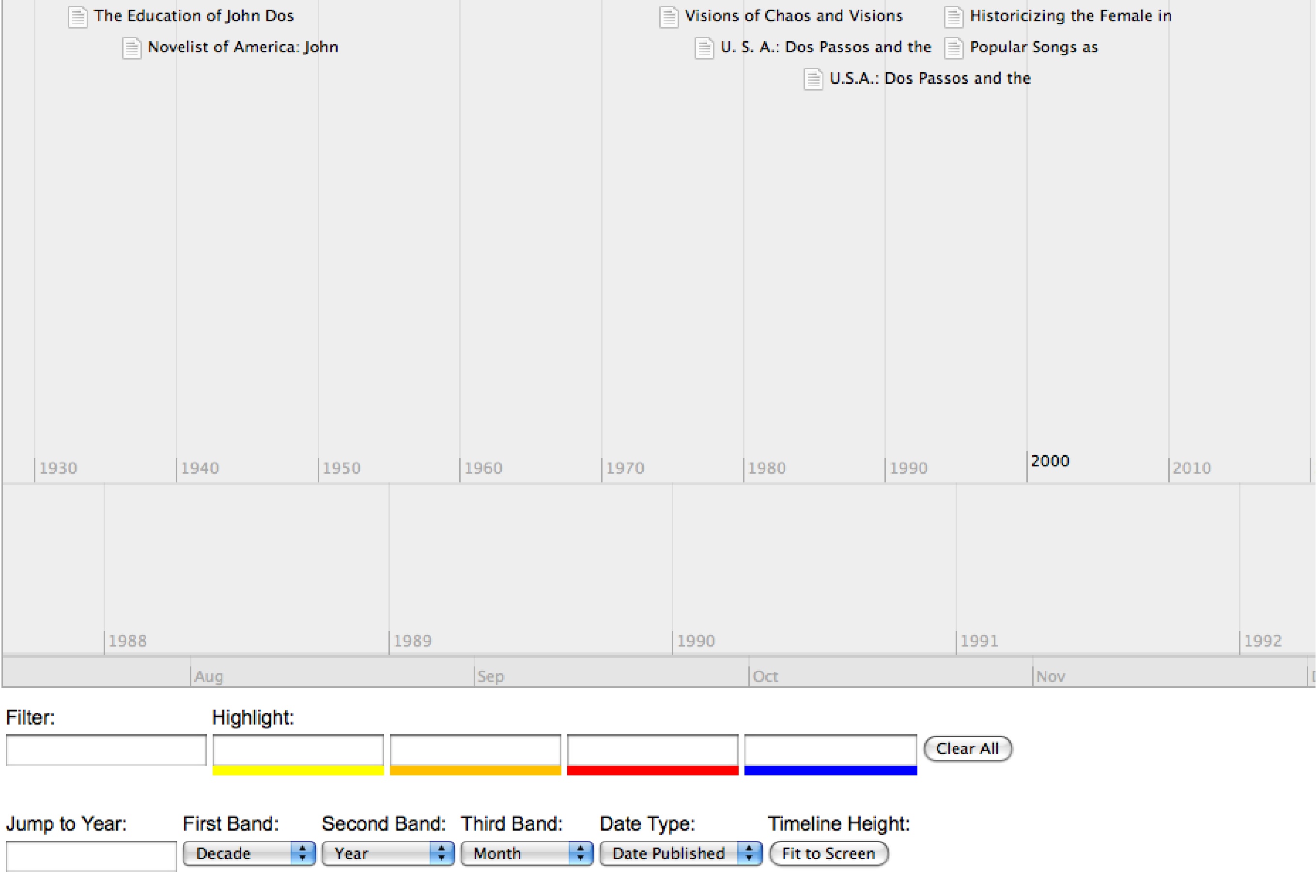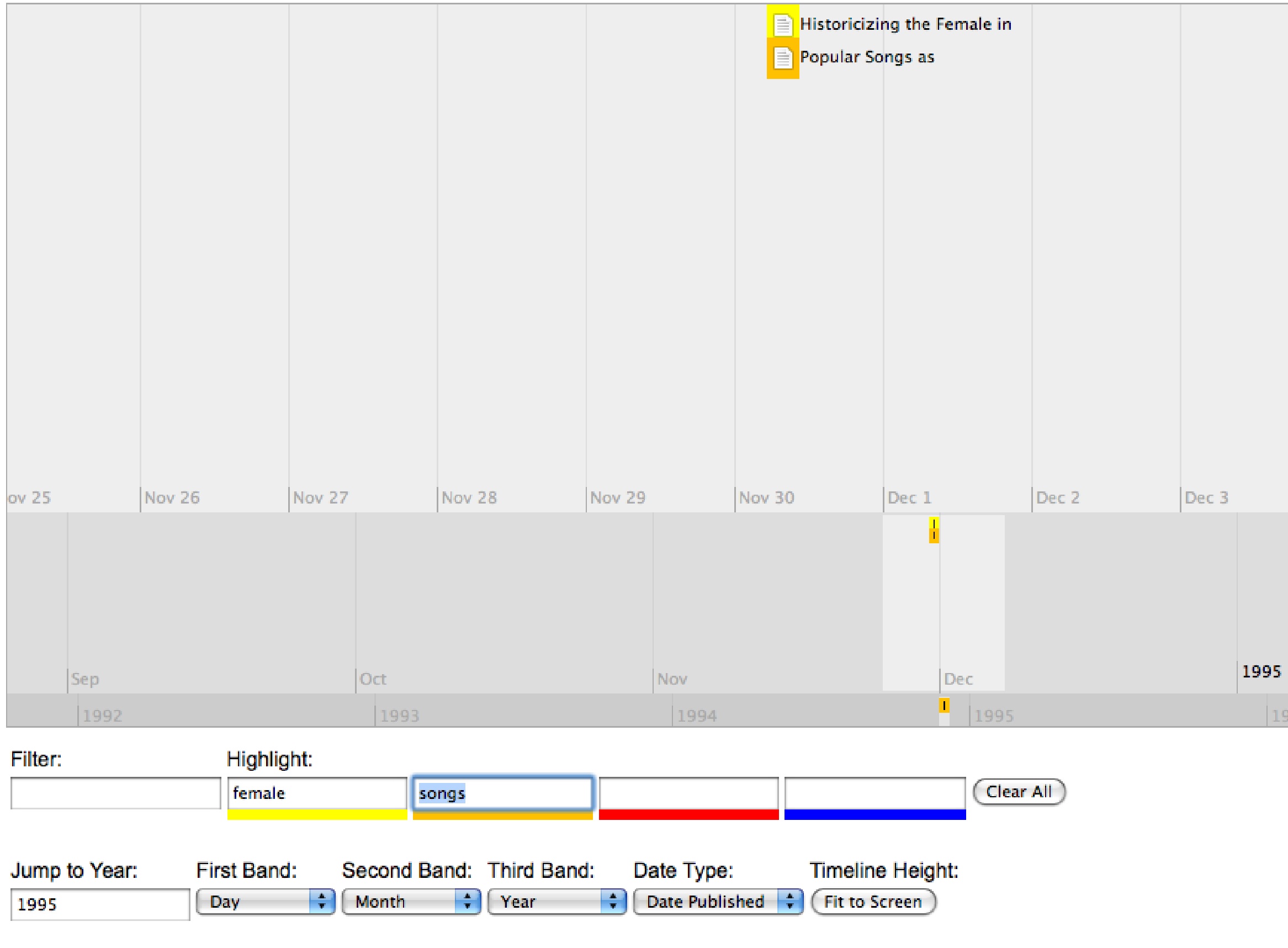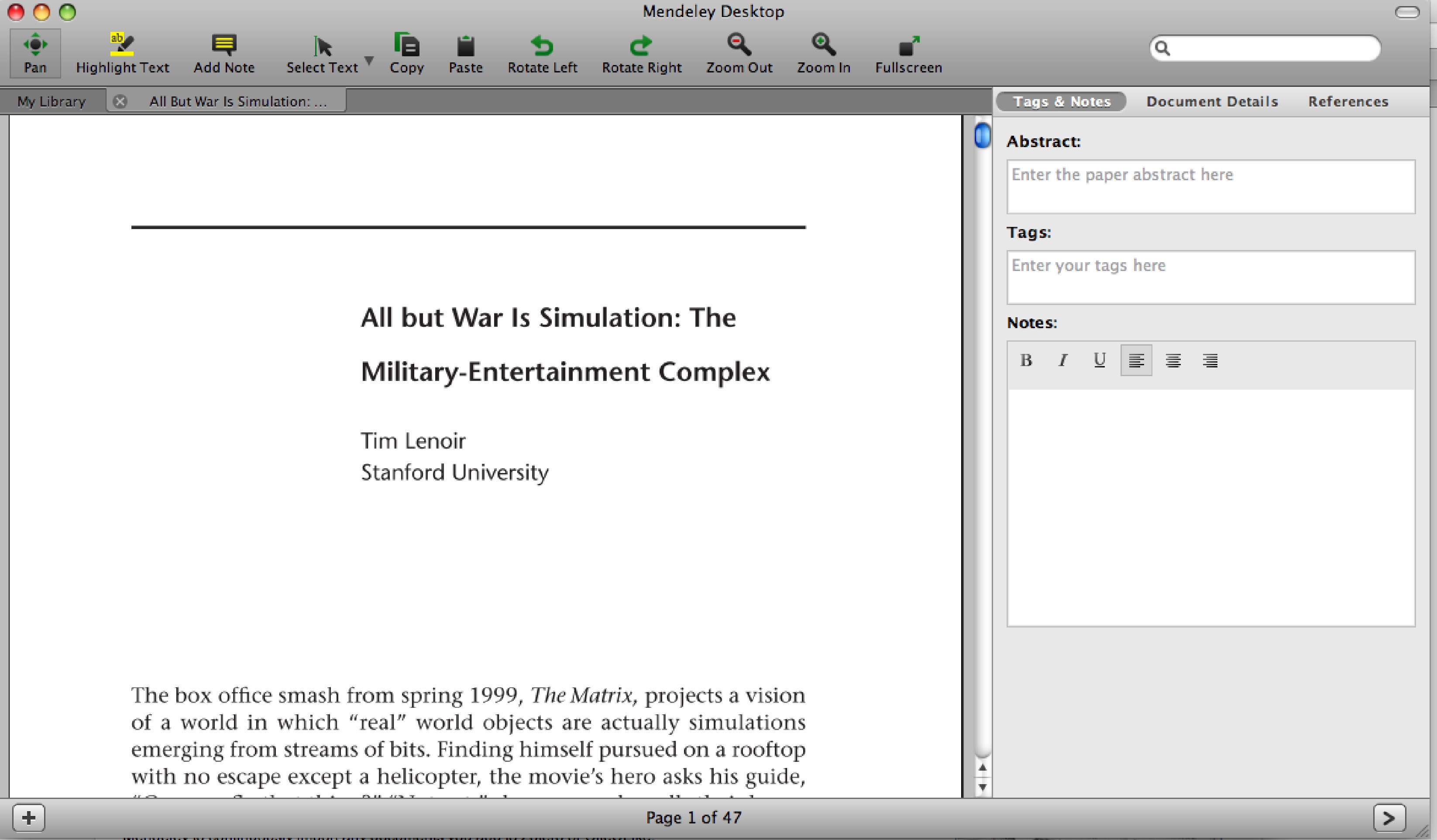Related Categories: Social Networking Systems | Online Knowledge Bases | Browser Innovations | Tools for Online Reading
Summary:
Zotero is an information manager that, as an extension for Firefox, facilitates storing citation information, clipping, and sorting research material on the web. Funded by the United States Institute of Museum and Library Services, the Andrew W. Mellon Foundation, and the Alfred P. Sloan Foundation, Zotero is a product of the Center for History and New Media at George Mason University. The public beta version of Zotero 1.0 launched on October 5, 2006, while the most recent version went live in May 2009.
Description:
Once downloaded as an extension for Firefox, users interact with Zotero in two ways. One way is through the address bar in their browser window. For sites from which Zotero can glean information, an icon will appear that will allow users to save the information from that web page to their Zotero library. If there are multiple items on the webpage (like a list of Amazon search results), a file folder will appear, which allows the user to select and save multiple pieces of information from the webpage. The second way for users to engage with Zotero is from the Zotero icon that appears in the right-hand corner of the browser window after download. Clicking the icon opens an iTunes-like interface from which a user can access his or her library. In the upper right-hand corner of the interface is a button to close the window and next to it is another to expand to a full screen view.
![]()
Address bar with Zotero icon
The top of the window features a toolbar which allows users to create a new collection or a group, perform actions like import or create a timeline, and create a new entry, from books to newspaper articles. The toolbar also lets users “create new item from current page,” “add item by identifier,” create a new note, add a new child attachment, perform an advanced search, search, and sync their information with the Zotero server.
The Zotero interface is divided into three panes, with the left pane consisting of all the documents in one’s library, divided into collections a user creates to organize his or her information. This pane also features the tag selector, which displays tags created by the user (clicking on a document in the center pane shows the document’s information in the right-hand pane and the “Tags” button), as well as automatically generated tags. Clicking on a tag displays all the material tagged with that information in the center pane.
The center pane displays documents, which can be accessed by clicking on a tag in the tag selector, or by clicking on “My Library” or a more specific collection within “My Library.”
The right-hand pane contains bibliographic information, which is accessed through the “Info” tab at the top. Next to the “Info” tab is a “Notes” tab, where users can write their own notes about a selected text and tag their note. Significantly, all information added to a collection, including tags and notes, becomes a searchable part of a user’s Zotero database. Clicking on the next tab, “Tags” allows users to generate their own tags while the final tab, “Related” allows users to peruse their collections and connect texts.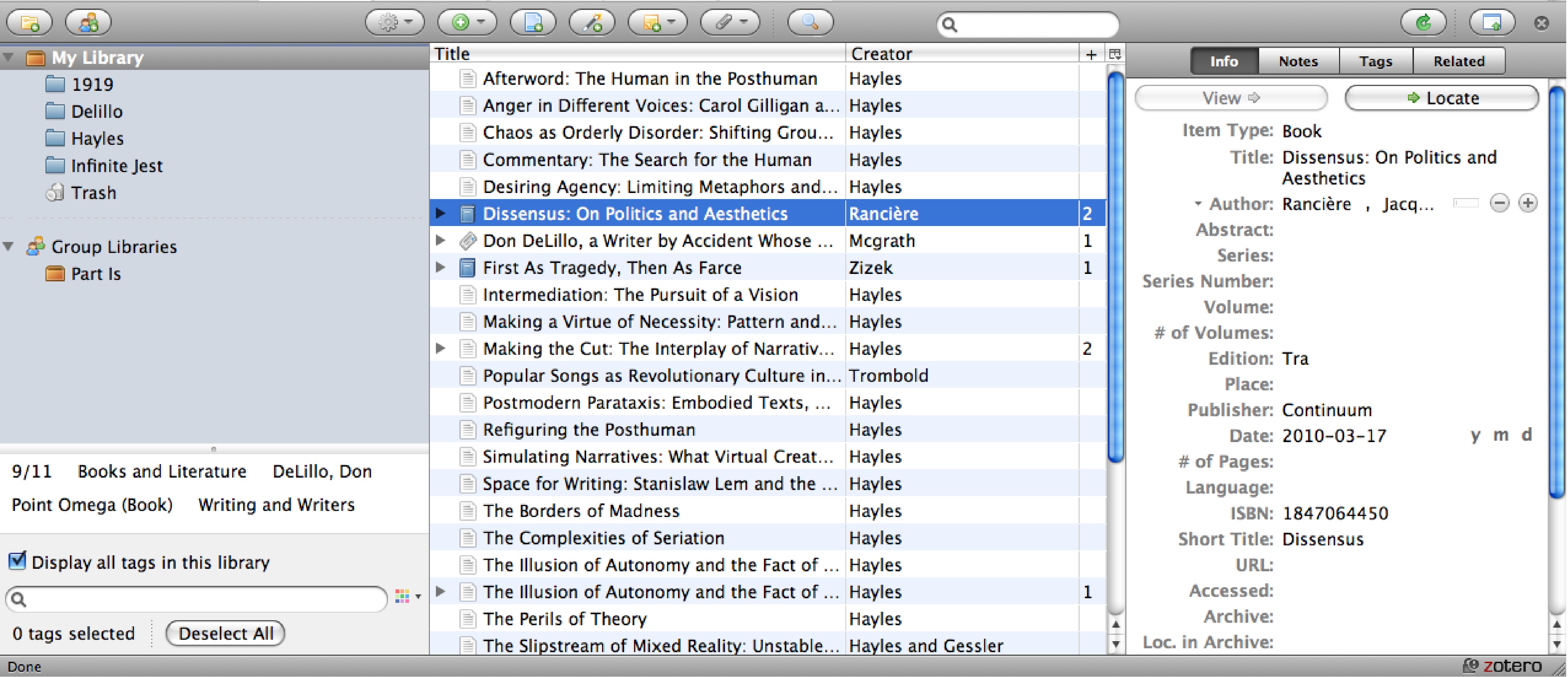
Zotero Interface
Using the “Info” tab, a user can view their document as a snapshot, a page, or a file. For instance, if a user, while looking at a book on Amazon, saves the page using the icon in the address bar, s/he will then be able to view the page by once again accessing that link. In the act of saving, Zotero creates an entry for the book along with bibliographic data as well as a child attachment in the form of a link to the Amazon page. Clicking on the attachment displays a button, “View Page,” which will then load the web page, along with access information and a section to take notes.
If, however, a user views the text of a document in the browser window and then saves that document to his or her library, Zotero will take a snapshot of the whole page, which can be accessed offline, annotated, and highlighted. To see the snapshot, users simply click “View Snapshot.”
For documents a user has saved to his or her computer, a user will see the “View File” button, which, when clicked will then display the document. It is important to note that the button used to access the document is determined by the method in which the document was stored to “My Library.”
Snapshot view with highlighted text and notes
Also contained within the “Info” tab is a “Locate” button which accesses WorldCat to display library information. Some documents also access the Internet Archive’s Wayback Machine, which archives screen captures of webpages over time.
To facilitate citing information, Zotero manages citations according to a user’s preferred bibliographic style. Zotero also has a number of plug-ins which can help users perform several functions. For instance, using the Microsoft Word plug-in helps users insert citations and generate bibliographies easily using their collections.
In addition to facilitating citation management, Zotero allows users to create groups. Once a group is created, members can add to the group library, which can then be accessed by all members. The group library is separate from “My Library” such that while a user can transfer materials from his or her personal library to the group library, items added to the group library are not automatically added to “My Library.” While having a group library allows multiple users to share and comment on information, Zotero also creates a web page for each group such that each member can access the material remotely from anywhere, even public computers without the Zotero extension.
Users can also take advantage of Zotero’s social networking functionalities by creating a profile on the website and following other Zotero users. Profiles focus on one’s professional interests; as such, users list the institution with which they are affiliated, list their discipline, and they can choose to add a CV. Relationships are restricted to “follows,” which as a category does not seek to create fine-grained relationships between users.
Interestingly, Zotero users can create timelines of their collections using MIT’s SIMILE Timeline Project. This allows users the opportunity to see how the subject of their collections look temporally. The timeline is divided into three bands, which change the way in which information is displayed. For instance, to see all my articles on one screen, I made the first band divide the information by decade. To see information on a more micro level, a user may want to divide the first band up by day, the second band by month, and the third band by year.
For a better sense of trends, a user can filter the results of the timeline, then input phrases into each of the following boxes which will then highlight that particular term. In this way, a user can hone in on the most relevant information in his or her collection.
Research Context:
Zotero allows users to add documents to their libraries from all over the Internet in order to create their own personal information archive. Within this archive, users create their own tags and systems of organization, which they can then share with other users. As such, Zotero provides a model for the creation of document relationships, which RoSE can implement in a variety of ways. Although RoSE currently focuses on articulating relationships among documents and people, to build a more robust research environment, developers may want to consider how documents can be further engaged in RoSE to facilitate meaningful discourses about the one’s work.
Technical Analysis:
Zotero is an extension for Firefox. It is compatible with the following metadata standards and microformats: embedded RDF, COinS, Dublin Core XML, and MARC. Zotero is also compatible with the following Online Public Access Catalog (OPAC) software: Voyager, InnoPAC, SIRSI, Aleph, Dying, VTLS, DRA, GEAC, TLC / YouSeeMore, and Koha. As mentioned previously, there are a number of plug-ins available which will allow users to customize Zotero and integrate it with other software.
Mendeley:
Like Zotero, Mendeley features an iTunes like interface that is also divided into three panels with much of the same features exhibited in the Zotero interface. Mendeley also uses the language of the collection as a system of organization, though there are other, readymade systems of categorization, such as “Recently Added,” “Favorites” and “My Publications.”
Mendeley allows users the opportunity to view PDFs within the Mendeley desktop as well as highlight texts and write notes. However, for files that are not PDFs, Mendeley appears to download the relevant bibliographic information rather than taking snapshots or adding the file as an attachment like Zotero does.
Unlike Zotero, rather than existing as an extensions of a web browser, Mendeley, in addition to a web site, includes its own desktop, which is synced to information on the website for greater access. Mendeley supports the Windows, Mac, and Linux operating systems and utilizes plug-ins for Word (in Windows) and OpenOffice to facilitate creating bibliographies. Users drag and drop the web importer to their browser toolbar, which allows the user to then capture information for various websites by clicking on the web importer.
Evaluation of Opportunities and Limitations for Transliteracies:
Zotero provides a useful model for the ways in which users engage with documents, particularly in a research environment, thus making Zotero an important object of study for RoSE. While RoSE focuses on creating connections between documents, people, and people and documents, a useful feature would be to enable some of the functionalities seen in Zotero, such as the ability to build “collections” of materials (and people, a feature Zotero does not have) and share that information with colleagues through the website.
The focus on creating “collections” in Zotero points to the persistence of curatorial language in this and related projects, which also foregrounds the primacy of metaphors in our interactions with not just interfaces, but also with the ways in which we view our actions within those interfaces. In my current Firefox window, for example, I obviously have the metaphor of the “window,” which is strangely combined with my ability to have two “tabs” open in the window (here, the language of the office world and filing systems) as well as the metaphor that determines my actions, that of “scrolling” (a reference to a much earlier reading technology that emphasizes reading top to bottom rather than left to right). In much the same way that Freebase creates “gallery” views, Zotero articulates its own relationship to information through metaphors of curation. Users create “collections” of data under “My Library” on the Zotero interface. Mixed metaphors aside – the symbol for my collection is a file folder – what the language of “collection” does is present an interesting addition to the database / narrative dialogue by positing that the way we interact with the database is by creating collections, which, because “collection” implies an intentional gathering of objects, is in effect creating a narrative from out of the database.
The collection’s relationship with database stems from the collection’s need to be categorized; as noted by Susan Stewart in On Longing, “The collection replaces history with classification” and “involv[es] the reframing of objects within a world of attention and manipulation in context” (151). The collection, as in the case of Zotero, must be classified in order to be easily accessed by the user through the interface and by the database behind the interface. Simple classifications like the names for collections already reframe the the context of the items in the collection, pointing towards the need to narrativize the database to make meaning out of it.
Indeed, non-narrativized collections in Stewart are called “insane” collections. Referencing a piece by William James, Stewart discusses the case of misers, whose conceptions of ownership are insane (154) and hoarders, who are more interested in the impulsive accumulation of objects than in systems of organization by which the objects can be ordered. As Stewart notes, “the insane collection is a collection for its own sake and for its own movement. It refuses the very system of objects” (Stewart 154). Thus, if we align the database with the organization of material and narrative with interpreting that material, the insane collection is insane because it refuses both database and narrative; it is all data. Interestingly, the language of curation itself refers to managing the insane – The Oxford English Dictionary lists the first definition of “curator” as “One appointed as guardian of the affairs of a person legally unfit to conduct them himself, as a minor, lunatic, etc.”[1] Based on this definition, while curation refers to the museum or gallery, it also refers to the management of the unmanageable or, in this context, managing the proliferation of data enabled by the internet.
Stewart, in writing about the collection, refers to personal collections and the types of collections one sees in libraries and museums. Thus, she is able to argue, “In acquiring objects, the collector replaces production with consumption” (156) and, later, refers to “the (false) labor of the collector” (Stewart 159). However, the collection, as it appears in programs like Zotero, comes to exist as a mode of intellectual labor in which the consumptive quality of collecting is replaced by the production of knowledge in a remarkable shift in the nature of the collection (significantly, Stewart’s book was published in the early 1990s, before the rise of the internet).
In yet another shift in the nature of the collection, Zotero allows collections to be accessed from multiple computers. Whereas previously Stewart could write, “the collection is magically and serially transported to the scene of acquisition, its proper destination” (Stewart 165), Zotero’s recently launched an update allows access from other computers. This demonstrates a need to have multiple locations for a collection (rather than a single location to which one must travel).
Pointing to the language of collection within Zotero reveals a significant change in the way the collection is currently conceived. At the same time, this language foregrounds the need to analyze the metaphors used in the development of RoSE and illustrates the larger contexts of what the metaphors do.
Notes:
[1] “Curator,” Oxford English Dictionary, 17 February 2010<http://dictionary.oed.com/cgi/entry/50055929query_type=word&queryword=curate&first=1&max_to_show=10&sort_type=alpha&search_id=zbjN-s2rqco-13176&result_place=2>
Bibliography
OED.com. 2009. Oxford University Press. Web. 17 February 2010.
Stewart, Susan. On Longing: Narratives of the Miniature, the Gigantic, the Souvenir, the Collection. Durham: Duke University Press, 2005. Print.

